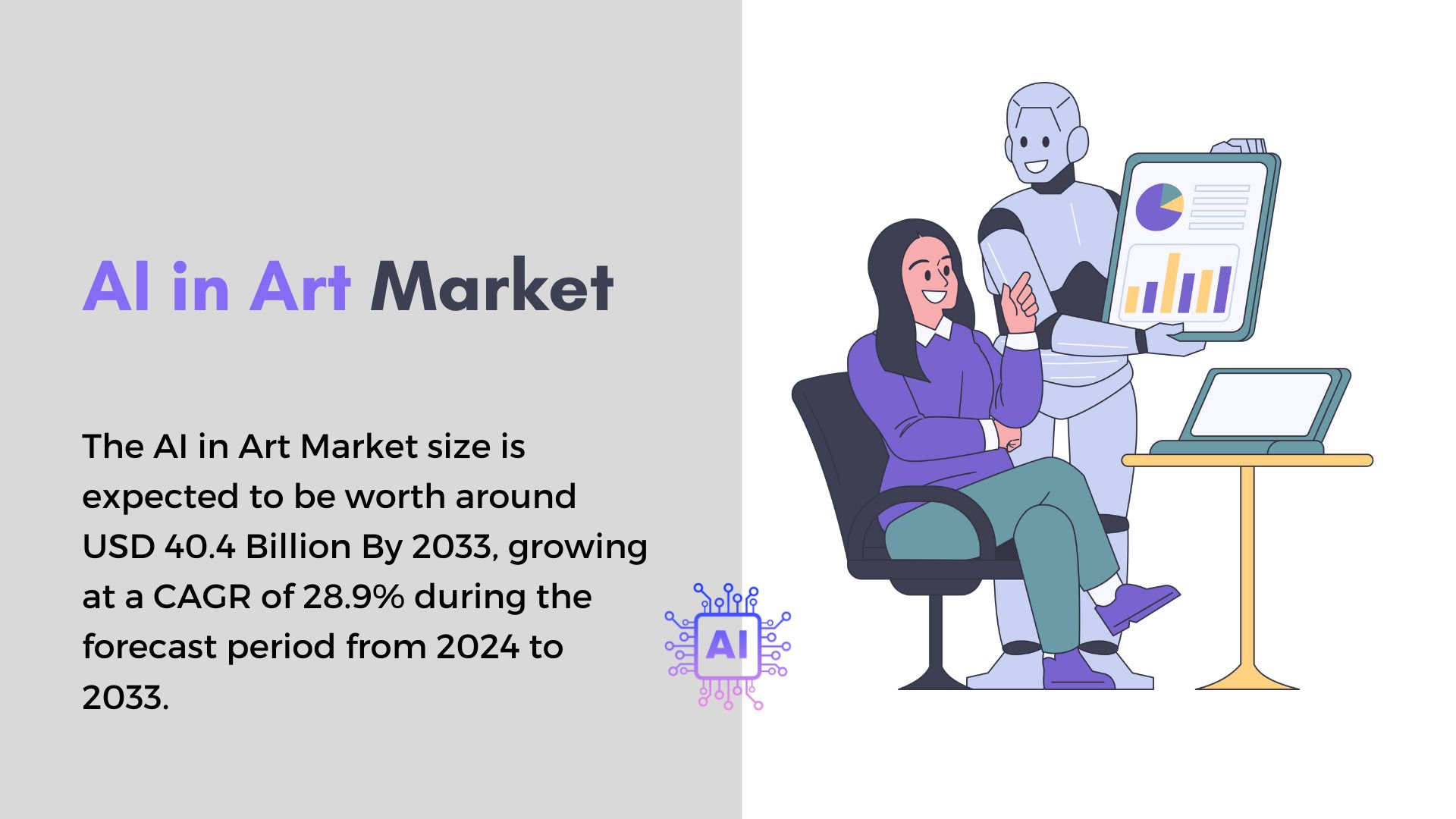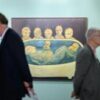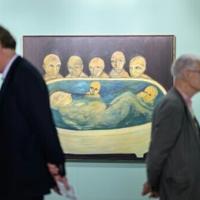
Table of Contents
Introduction
The AI in Art Market is experiencing rapid growth, projected to reach USD 40.4 billion by 2033, from USD 3.2 billion in 2023, at a robust CAGR of 28.9%. This expansion is driven by advancements in machine learning, computer vision, and natural language processing (NLP) technologies, which enable AI to create, critique, and curate art.
One of the key growth factors for AI in the art market is the ability of AI algorithms to generate unique and novel artwork. AI-powered systems can analyze vast amounts of data, learn patterns, and create original artworks based on the learned aesthetics and styles. This has opened up new avenues for artists to experiment with AI as a creative tool and produce art that challenges traditional notions of authorship and creativity.
Moreover, AI has democratized access to art by enabling virtual experiences and interactive installations. Virtual reality (VR) and augmented reality (AR) technologies powered by AI allow viewers to engage with art in immersive and interactive ways, transcending physical limitations. This has expanded the reach of art to a wider audience and created new opportunities for artists to exhibit their work globally, regardless of geographical constraints.
The AI in art market presents opportunities for new entrants to contribute to this evolving landscape. Artists, technologists, and entrepreneurs can collaborate to develop AI-driven artistic tools, platforms, and marketplaces. These innovations can facilitate the creation, curation, and distribution of AI-generated art, fostering a vibrant ecosystem for artists and collectors alike. Additionally, there is room for exploring the ethical and philosophical implications of AI in art, addressing questions surrounding originality, authorship, and the role of human creativity in the context of AI-generated artworks.
Key Takeaways
- The Global AI in Art Market is projected to reach USD 40.3 billion by the year 2033, expanding at a Compound Annual Growth Rate (CAGR) of 28.9% during the forecast period. The market was valued at USD 3.19 billion in 2023.
- In 2023, the cloud-based segment maintained a dominant position within the AI in Art Market, capturing over 65% of the market share.
- The machine learning segment was predominant in the AI in Art Market in 2023, securing more than 40% of the market share.
- North America held a dominant market position in the AI in Art Market in 2023, capturing over 40% of the market share, with revenue approximating USD 1.2 billion.
AI in Art Statistics
- The Global Artificial Intelligence (AI) Market size is expected to be worth around USD 2,745 billion by 2032, from USD 177 billion in 2023, growing at a CAGR of 36.8% during the forecast period from 2024 to 2033.
- The Global Generative AI Market size is expected to be worth around USD 255.8 billion by 2033, from USD 13.5 billion in 2023, growing at a CAGR of 34.2% during the forecast period from 2024 to 2033.
- 27% of Americans have viewed at least one piece of AI-generated art.
- The AI-generated NFT with the highest value was sold for USD 1.1 million.
- 31% believe AI can produce art on the same level as humans.
- 76% of individuals don’t think artificial intelligence (AI) art qualifies as art.
- 9% of Americans believe the person who entered the prompt into an AI art generator, such as Mid Journey, deserves credit.
- An estimated 35% of fine art auctions now include AI-created artworks.
- “The painting generated by artificial intelligence was sold for USD 432,500 at Christie’s auction house.”
- 75% of artistic organizations are using AI to suggest personalized recommendations.
- 78% of artists believe that AI will bring new aesthetic possibilities to the world of visual arts.
- Art communities online have seen a 50% rise in discussions about AI-generated art.
- AI-generated art is estimated to represent 5% of the total contemporary art market by 2025.
- AI-generated art pieces have sold for as high as USD 432,500 at auctions.
- 45% of people can’t tell the difference between human-created art and AI-created art.
- AI is currently being used by 29% of digital artists.
- In the area of art conservation, AI is being used to predict art decay with 86% accuracy.
- 70% of artists believe that AI will not be able to create art that carries the same emotional depth as human-made art.
- The AI-created artwork, “Portrait of Edmond de Belamy,” was expected to sell for around USD 7,000-10,000, but it finally sold for USD 432,500.
- AI-Art exhibitions have increased by 25% in the past three years.
- 50% of auctioneers believe that AI can play a significant role in art authentication.
- The first AI-generated portrait sold at Sotheby’s fetched £40,000.
Leading AI Art Generators
| AI Art Generator | Images Created |
|---|---|
| Stable Diffusion | 12.6 billion |
| WOMBO Dream | 1.5 billion |
| Adobe Firefly | 1 billion |
| Midjourney | 964 million |
| DALL-E | 916 million |
| Total | 16.98 billion |
| AI Art Generator | Market Share (%) |
|---|---|
| Midjourney | 26.8% |
| DALL-E | 24.4% |
| NightCafe | 23.2% |
| Starry AI | 12.75% |
| Stable Diffusion | 12.5% |
Public Perception of AI Art in the United States
| Response | Percentage |
|---|---|
| Have seen AI art | 27% |
| Enjoyed AI art | 56% |
| Did not enjoy it | 19% |
Emerging Trends in the AI Art Market
- Generative AI’s Growing Market: The AI art market, driven by generative AI, is experiencing rapid growth. This expansion is fueled by the integration of AI in creating unique visual art, music, and literature.
- NFTs Creating New Revenue Streams: Non-fungible tokens (NFTs) are revolutionizing the way artists monetize their work, providing new revenue streams by allowing them to sell unique digital art pieces.
- Immersive 3D and AR/VR Art: Technological advances are enabling artists to create immersive 3D and augmented/virtual reality art experiences. This trend is transforming how audiences interact with art, making it more engaging and interactive .
- AI Democratization: The accessibility of AI tools is increasing, allowing more artists and creatives to utilize AI without the need for deep technical expertise. Tools like ChatGPT and other AI platforms have become more user-friendly and widely accessible.
- Ethical and Legal Considerations: As AI art becomes more common, there’s a growing focus on the ethical and legal aspects, including copyright issues and the authenticity of AI-generated art. Discussions and tools for protecting artists’ rights and identifying AI-generated works are evolving.
Top Use Cases for AI in Art
- Enhanced Creativity: AI is used to augment human creativity, offering artists new tools and techniques to explore. AI algorithms can suggest modifications, generate creative ideas, and even collaborate in the creation of art pieces.
- Personalized Art Experiences: AI enables the creation of personalized art based on viewers’ preferences and past interactions. This personalization is enhancing user engagement and satisfaction.
- Streamlined Production Processes: AI tools streamline the art creation process by automating routine tasks such as color correction, pattern generation, and even initial sketching, which allows artists to focus more on the creative aspects of art.
- Educational Tools in Art: AI-powered platforms are revolutionizing art education by providing personalized learning experiences, real-time feedback, and access to virtual mentors, making art education more accessible and effective.
- Art Therapy and Mental Health: AI is being integrated into therapeutic practices where art is used as a medium to address mental health issues. AI can help tailor therapeutic sessions to individual needs and track progress over time.
Major Challenges
- Ethical and Authenticity Concerns: A significant challenge in the AI art market is the ethical debate surrounding the use of AI in creating art. Many traditional artists and critics view AI-generated art as potentially undermining the authenticity and integrity of human-created artwork.
- Lack of Explainability: There is a prevalent issue with AI systems’ opacity, where it’s often not clear how decisions are made or artworks are generated. This “black box” nature of AI can lead to distrust among artists and consumers who value transparency in the creative process.
- Data Privacy and Security: As AI in art involves processing vast amounts of data, including potentially sensitive artistic content, ensuring the confidentiality and security of this data is a critical challenge. Adequate measures must be in place to prevent unauthorized data access and leaks.
- Market Volatility and Pricing: The AI art market is subject to high volatility and uncertainty in pricing, particularly concerning new and untested forms of art such as AI-generated pieces. This instability can make it difficult for artists and galleries to predict market demand and set prices accordingly.
- Technological Accessibility: The disparity in technological access and digital literacy can limit the adoption and acceptance of AI-generated art across different regions and demographics. This challenge is particularly pronounced in less technologically developed areas.
Market Opportunities
- New Creative Possibilities: AI opens up new avenues for creativity, allowing artists to explore novel forms of expression and artistic techniques that were not possible before. This can lead to the emergence of groundbreaking artwork that pushes the boundaries of traditional art forms.
- Expansion of the NFT Marketplace: AI has significantly contributed to the growth of the NFT (non-fungible token) market by enabling artists to monetize digital art in new ways. This has created a vibrant new revenue stream and expanded the market for digital artworks.
- Increased Accessibility to Art: AI technologies can democratize access to art by lowering barriers to entry for new artists and reaching broader audiences through digital platforms. This can help diversify the art world and bring in new voices and perspectives.
- Enhanced Analytical Tools: AI can provide powerful tools for analyzing art market trends and consumer preferences, offering valuable insights that can help artists and galleries make more informed decisions about production and sales strategies.
- Global Market Expansion: The global nature of the digital world means that AI-generated art can easily cross geographical boundaries, allowing artists to reach an international audience without the logistical constraints associated with physical artworks.
Recent Developments
- In June 2024, OpenAI announced the release of DALL-E 3, an advanced version of their image generation model, which includes improved safety measures and higher resolution capabilities.
- In March 2024, Adobe and NVIDIA announced a partnership to co-develop a new generation of generative AI models integrated into Adobe’s creative applications, aiming to enhance creative workflows for artists and designers. Adobe Firefly’s models will be optimized using NVIDIA’s AI cloud services, including the NVIDIA Picasso service.
- In August 2023, Google introduced enhancements to its AI-powered Google Photos and Google Art & Culture apps, which now offer more sophisticated AI-generated editing and creative tools for users.
- In December 2023, IBM highlighted advancements in model optimization techniques such as Low Rank Adaptation (LoRA) and quantization, which improve the efficiency and performance of AI models used in various applications, including art generation.
Conclusion
In conclusion, the integration of AI in the art market has brought forth new possibilities and challenges. AI algorithms have enabled the generation of unique artworks and expanded access to art through virtual experiences. New entrants can seize opportunities by developing AI-driven tools and platforms, while also addressing ethical considerations. Balancing the contributions of AI and human creativity and ensuring transparency will be crucial for the sustainable growth of AI in the art market.
This post was originally published on this site be sure to check out more of their content






